Before the beginning of the space age, the phenomenon of volcanism was known only on Earth. Although planetary scientists (and numerous science fiction writers) quite reasonably assumed that volcanoes existed on other planets. Now we know that they are not wrong. Active volcanoes have already been discovered on the Jovian moon Io, the grandiose volcanic structures of Mars have taken their rightful place in the Guinness Book of Records, and cryovolcanism has been discovered on the icy moons of distant giant planets, apparently playing a major role in the evolution of many bodies of the Solar System.
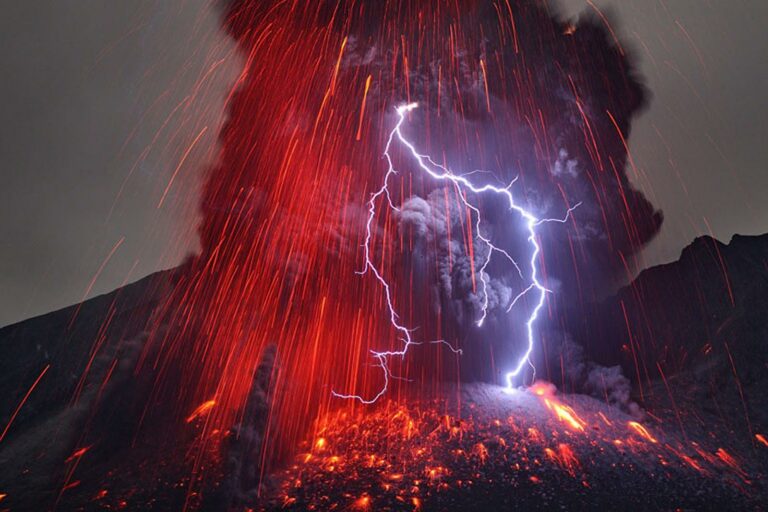
For the appearance of a volcano, relatively little is needed — a planet or its moon with a solid surface and some kind of energy source that constantly heats its interior (tidal interaction or radioactive decay). As a result, the “insides” of the object partially melt or even turn into a gaseous state and begin to “look for a way out”, breaking through the solidified crust. As recent studies show, such a combination of conditions in the Universe is not uncommon. It was especially interesting that it was the first volcanoes that probably caused the origin of terrestrial life. Apparently, such a scenario may well be realized on the planets of other stars.
Most people understand the word “volcanism” as an outpouring of molten lava on the earth’s surface. However, in addition to lava, volcanoes often emit a huge amount of gases, as well as solid particles — pyroclastics consisting of small crystals and solidified lava droplets. In our view, the peculiar forms of relief that arise during volcanic eruptions are also common — cone-shaped mountains, which are just called “volcanoes”.
Effusive volcanism is accompanied by outpourings of lava from the interior to the surface without the formation of conical elevations. This kind of volcanism definitely existed in the past, both on our planet and on the Moon, Venus and Mars. Detailed images of Mercury’s surface obtained by MESSENGER also revealed structures which origin may be a consequence of volcanic activity that took place in the planet’s past.
Volcanism of the Moon and rocky planets
Volcanic rocks have been found on the Moon — basalts, which are widely represented on Earth. They cover vast expanses of the so-called lunar seas. Their appearance is associated with the impacts of large asteroids; they left giant craters on the surface, which eventually filled with liquid lava that rose along the faults from the lunar interior. The bottom of some large impact craters is also covered with lava. Traces of its outpouring in the form of streams, domes, calderas (collapsed volcanic domes) are captured by spacecraft. The age of basalts is about 3 billion years. In other words, the processes of volcanism on the Moon took place a very long time ago, at the early stages of its formation, when the substance of its interior had not yet cooled down and provided endogenous activity.
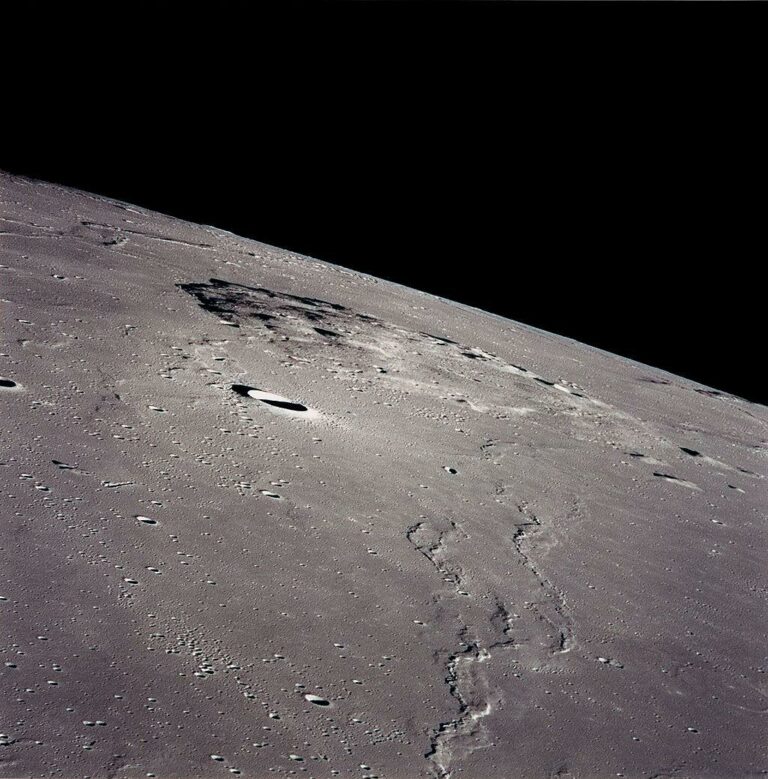
It is impossible to study the relief on Venus during observations in the visible range due to dense clouds. However, radar methods have established that the entire planet is dotted with cone-shaped structures of volcanic origin. Sometimes it is possible to “see” lava flows. The landers transmitted photographs showing lava-filled areas. But we do not know about the composition of the rocks composing them yet.
There are many indirect facts that allow us to make the assumption that volcanism on Venus continues at the present time. Firstly, it is a high surface temperature (460 °C), possibly associated not only with the greenhouse effect, but also with outpourings of hot lava. Secondly, the atmosphere of the planet consists mainly of carbon dioxide (volcanism is its main source on Earth). It also contains drops of sulfuric acid and sulfur particles — most likely of volcanic origin. In the upper atmospheric layers, sulfur dioxide SO₂ is periodically recorded — another characteristic product of eruptions. Its molecules are destroyed by sunlight, which means that there must be some source of its replenishment.
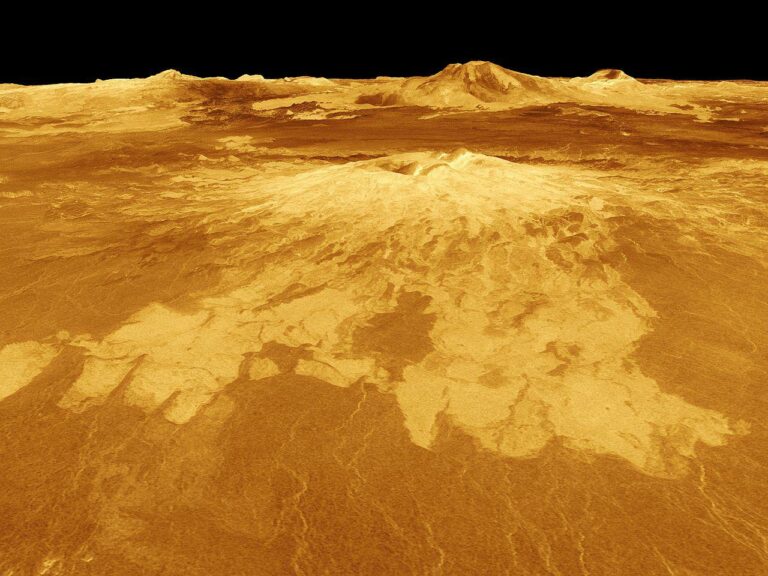
Artificial moons of Venus have registered gravitational anomalies similar to those found in the area of young volcanoes of the Earth, and numerous electrical discharges in the atmosphere over the Venusian mountains (eruptions of terrestrial volcanoes are often accompanied by strong lightning). Perhaps the volcanism of the “Morning Star” is much more intense than that of the Earth, and it is now undergoing a stage of development that ended on our planet several billion years ago.
Observation of the surface of Mars using orbiters and the results of the work of rovers indicated that global volcanic activity on the planet was manifested about a billion years ago. Basalt lavas covering the vast Martian plains erupted from deep cracks-faults in the crust. This also happened in the Earth’s past, when similar eruptions led to the appearance of basalt ladders (now they continue on the ocean floor). Typical volcanic structures similar to terrestrial shield volcanoes have been recorded on the surface of the planet, which are formed as a result of the outpouring from the central channel of low-viscosity basic lava, poor in volatile components. It spreads around the craters, forming a mountain with gentle slopes and a flat top, often crowned with a caldera of complex shape. The most characteristic of them are Olympus Mons and three volcanic cones in Tharsis. Studies of the images transmitted by the Mars Express probe led to the conclusion that this volcanic area was active only a few tens of millions of years ago. By geological standards, this is quite recent.
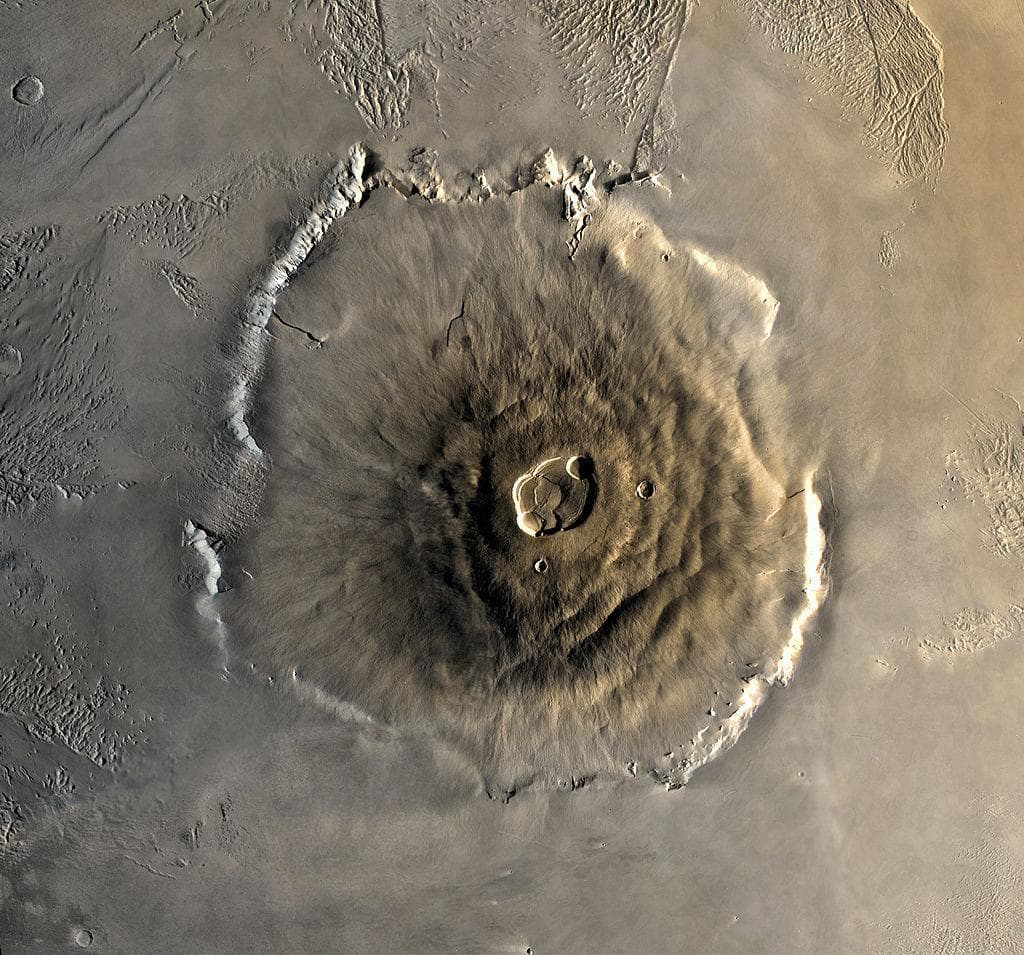
According to scientists, eruptions on Mars were quite rare, but incredibly large-scale and with a significant rate of flow compared to terrestrial ones. These conclusions are based on the fact that the weaker gravity of the Red Planet generates a lower buoyancy force. Therefore, magmatic foci in the Martian interior must be much deeper and more extensive in order for magma to rise close enough to the surface and pour out before solidifying. Such magmatic foci are formed at the site of the rise of the mantle plume (a drop-shaped center of molten rocks). They expand and remain active for a billion years, like a foci above the “hot spot” that feeds Hawaiian volcanoes on Earth. The Curiosity rover has performed the first X-ray structural analysis of Martian soil of volcanic origin. Its composition resembles weathered basalt soils in Hawaii, which confirms the similarity of igneous rocks on the two planets. Pyroclastic material has also been identified in the Martian province of Elysium on the slopes of ancient volcanoes and in their vicinity.
Volcanism of the moons of giant planets
The most interesting manifestations of extraterrestrial volcanism are currently observed on the Jovian moon Io. At least 12 active volcanoes have been found on it, which emissions rise to a height of up to 300 km. They contain sulfur, sulfur dioxide and some sulfides. Volcanoes also erupt silicate magmas with impurities of sulfur and its compounds.
Telescopic observations revealed a gas “plume” spreading along the orbit of Io, which included sulfur, sodium, potassium and oxygen (as we now know, these are the products of emissions from the interior of the moon). It is estimated that the amount of matter erupted by volcanoes on the surface of this moon for several million years would be enough to cover its entire surface with a layer of several tens of meters. This explains the absence of impact craters on Io, which are characteristic of other Jupiter moons — Ganymede and Callisto. They are simply buried under a powerful layer of eruption products.
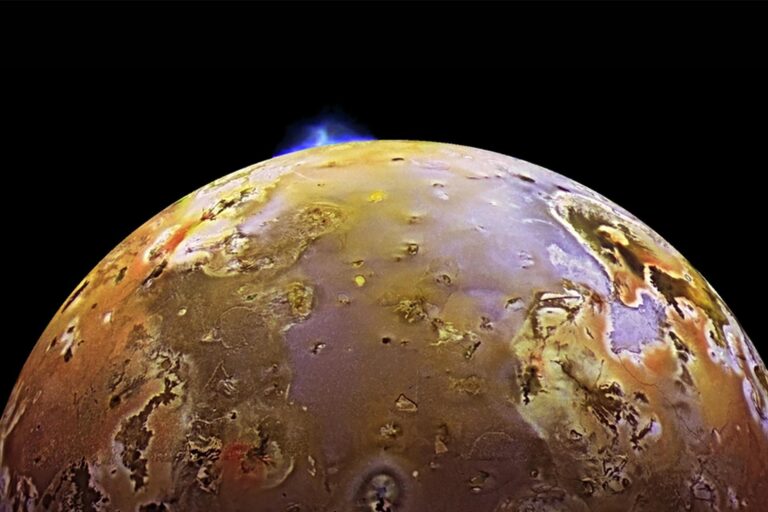
The source feeding Io’s volcanoes is probably the global magma ocean beneath its surface. This is also indicated by the presence of a magnetic field, which requires liquid electrically conductive layers in its interior. According to some estimates, the layer of molten matter lies at a depth of several tens of kilometers and occupies about 10% of the volume of the moon’s mantle, and the temperature in this layer may exceed 1200 °C. In the centers of eruptions, the temperature reaches 300 °C.
What kind of energy source, according to scientists, supports volcanism on Io? There are several assumptions on this score. Currently, the hypothesis is predominant, according to which the heating of the moon’s interior is provided by its periodic tidal deformations due to the small elongation of its orbit and under the influence of gravity of other large moons of Jupiter.
Another type of ejection (eruption) of matter from the interior to the surface of cosmic bodies is cryovolcanism. It is observed on some moons of planets far from the Sun at low temperatures. Instead of molten rocks, cryovolcanoes spew water, ammonia and other relatively low-boiling compounds — both in the liquid state (cryolave) and in the gaseous state. This phenomenon was first detected on Neptune’s moon Triton. The Voyager 2 spacecraft photographed jets of gas and dust that rose above the vents of cryovolcanoes to a height of 8 km, bent and stretched in the form of horizontal plumes for more than 150 km. In the southern polar region, there were about fifty such plumes.
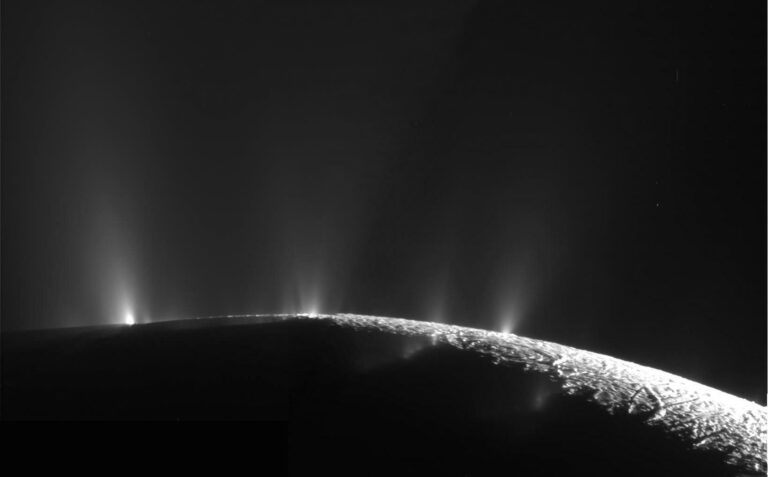
Cryovolcanoes have also been found on Saturn’s moon Titan, releasing cold matter (presumably methane) into the atmosphere. Another of Saturn’s moons, Enceladus, is famous for its emissions of water vapor, carbon oxides and ice particles. They resemble terrestrial geysers in volcanic areas, but differ from them in the solid aggregate state of the emission products.
A number of indirect data indicate the presence of cryovolcanism on some other icy moons orbiting giant planets (in particular, on Europa and Ganymede), as well as on the dwarf planets Pluto and Ceres. In all these cases, except the last one, cryovolcanism is supported by the energy of tidal interactions.
Volcanism on Earth
The last months of 2019 were marked by the activation of many terrestrial volcanoes: from small emissions of ash and steam to powerful eruptions that raised columns of pyroclastic material and huge volumes of volcanic gases to a height of tens of kilometers. The list of eruptions on our planet over the past six months is quite large. On average, the active phase of volcanism in different parts of the globe is observed 3 times a month.
Why is the volcanic activity of our planet so high? How does the Earth differ from other planets of the Earth group, where the manifestations of such processes are quite rare, have a different form, or have stopped altogether for a long time?
Volcanic processes reflect the active inner life of our planet. This activity is explained, first of all, by the presence of a hot liquid outer core. The hot core releases heat, which is unevenly redistributed through the mantle, leading to its mixing by convective flows. Volcanism is associated with the outflow of hot deep gases (fluids) from the interior of the Earth. They contribute to the decompression and local rise of deep matter. The mantle, depending on the intensity of heating in its upper part (starting from depths of 300-400 km), partially melts, forming deep diapirs or plumes — sources of magmatic melts. These melts, due to their lower density than the surrounding solid rocks, begin to move upwards along weakened fault zones. On their way, they create intermediate volcanic foci from which molten magma can pour to the surface.
Active volcanoes are distributed very unevenly on the Earth’s surface and are located in different geodynamic conditions. The vast majority of them (360 out of 540) are located in the so-called “Ring of fire” around the Pacific Ocean. The second belt — the Mediterranean-Indonesian — stretches in the latitudinal direction. There are about 150 active and fading volcanoes in it. The third belt stretches in a meridional direction along the Atlantic Ocean. It contains many underwater and island volcanoes. Moreover, on the ocean floor, their number can reach several thousand. Individual volcanoes (in particular, African volcanoes) are located inside continents and may be associated with deep faults of the earth’s crust that limit narrow active zones — rifts.
There is a strict geological conditionality in the location of volcanoes. So, in the mentioned “Ring of fire” they are all located on active continental margins and island arcs. Here the oceanic crust of the Pacific lithospheric plate sinks under the lighter “floating” continental crust of Eurasia. The vast volcanic Mediterranean-Indonesian belt is associated with the movement of the African and Indian-Australian plates towards the Eurasian plate.
In different epochs of geological history, volcanism on Earth proceeded in different ways. In the early stages, it was very hot, and volcanoes covered its entire surface. Over time, the planet began to cool down. It is estimated that its interior cools at a rate of about a degree per million years. The earth tends to get rid of excess heat during the processes of mantle convection, movement of lithospheric plates, volcanism and many others. Over time, terrestrial volcanism has become less active. In the future, when our planet cools down enough that the magma solidifies, it will stop, as it happened on Mars.
Volcanoes and life
The role of volcanoes in the development of terrestrial life is enormous. At the bottom of the oceans, underwater fractured outpourings have been discovered in the zones of mid-ocean ridges and deep-sea “oases” around hot water sources flowing from the earth’s crust. They carry out methane, carbon dioxide, carbon monoxide and sulfur dioxide, hydrogen sulfide, hydrogen fluoride, as well as iron, nickel and other biophilic elements (the so-called elements absorbed by organisms from the geochemical environment (soil, water) and used by them in the processes of vital activity). Hypotheses about the origin of life on Earth around these formations are increasingly being expressed.
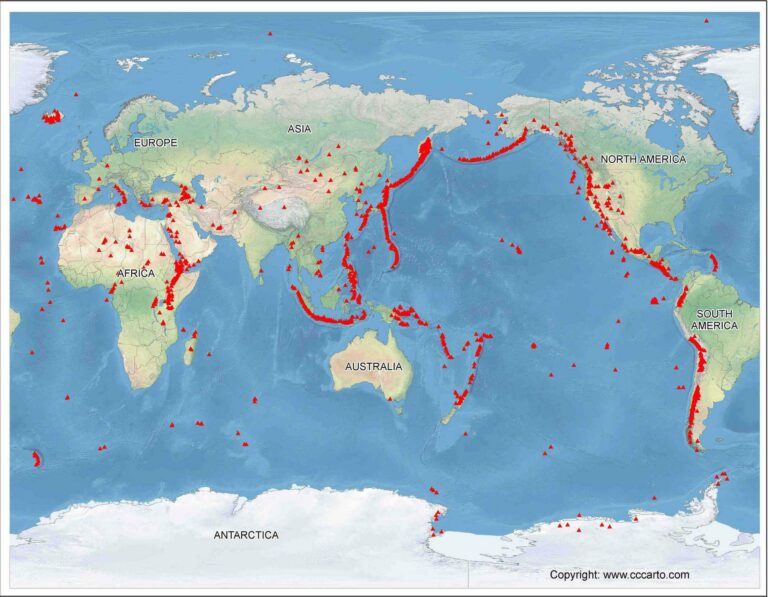
When searching for habitable exoplanets orbiting distant stars, methods of detecting volcanic gases in their atmosphere are used. On planets with volcanism, conditions for the origin and development of life are more likely to arise than without it. The reason for this is that the release of volcanic gases helps to maintain moderate temperatures on the surface, favorable for biological life, regulates the composition of the atmosphere, and carries out cyclic gas exchange with the substance of the planet’s mantle.
Thanks to volcanic carbon dioxide 3.5 billion years ago (in the archaea), the first photosynthetic organisms appeared — cyanobacteria. At the beginning of the Proterozoic, 2 billion years ago, they were joined by blue-green algae that saturated the Earth’s atmosphere with oxygen. This served as a trigger for the further evolution of the organic world. At the end of the Proterozoic, during the global glaciation, when ice covered even the equatorial regions, volcanic heat melted the “Snowball Earth”. This happened about 650 million years ago and at the beginning of the Paleozoic era, led to the “Cambrian explosion” — the instantaneous, from a geological point of view, appearance on the planet of all types of multicellular organisms, many of which exist in our time.
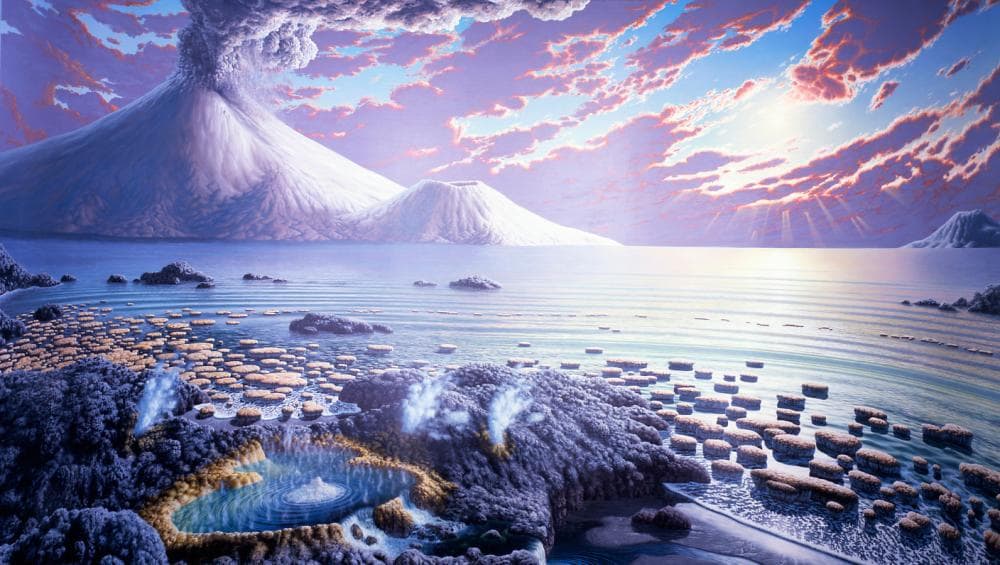
At the end of the Paleozoic (250 million years ago), a surge of volcanic activity on Earth gave rise to outpourings of fractured basalts that covered gigantic territories on land. As a result, the composition of the atmosphere changed, which led to the largest extinction in history, which destroyed 96% of marine and about 70% of terrestrial species. The extinct ones were replaced by others, the dinosaurs became the owners of the planet. It is hypothesized that fractured volcanism, similar to the Paleozoic, also manifested at the turn of the Mesozoic and Cenozoic eras. It could have caused the death of dinosaurs and the Mesozoic extinction. All volcanic catastrophes led to a leap in evolution and the flourishing of new species.
Volcanism, without a doubt, is the regulator of the climate on Earth. On the one hand, during eruptions, a huge amount of solid particles enters the atmosphere from its depths, which scatter the sun’s rays, leading to a noticeable cooling. There was evidence that some periods of prolonged cooling in the history of our planet were preceded by powerful volcanic activity. On the other hand, the increased amount of carbon dioxide emitted by volcanoes leads to a greenhouse effect that causes climate warming.
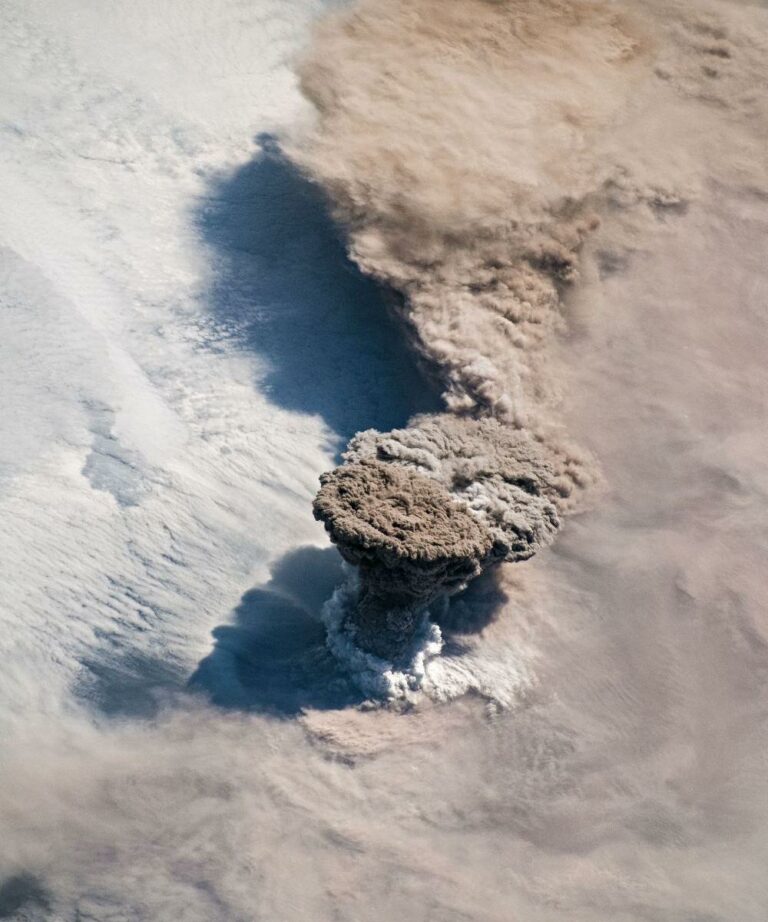
Volcanic rocks are relatively easy to weathering. Collapsing, they become suitable for the formation of soils, which in a warm climate turn into a fertile substrate for lush vegetation. Rich and fertile volcanic soils are often found in densely populated regions: in the southern part of Chile, in the northern highlands of Ecuador, in Southeast Asia (Indonesia and the Philippines). Tens of millions of people live here next to numerous volcanoes. And although it is not safe to live in such places, people willingly enjoy the results of volcanism, sometimes suffering from its indomitable force. Moreover, recent studies suggested that life on Earth and modern humanity also appeared due to volcanism. But this is a topic for a separate article.
Follow us on Twitter to get the most interesting space news in time
https://twitter.com/ust_magazine
